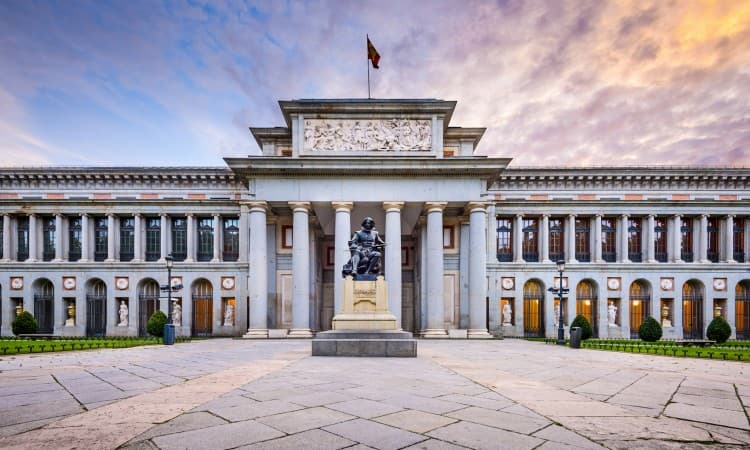
By Vimbai Ushe
[divider]
[dropcap]I[/dropcap] was on a mission to do what many believed was impossible. Visit the best sights Madrid had to offer in twenty-eight hours. Of course, planning such a trip is daunting. It requires hours of meticulous planning, as well as a lot of luck. Unfortunately, as a student who’s constantly studying, my schoolwork inhibited my friends and me from creating a master plan. Thank God, good fortune was on our side!
After coming back from an excursion with our class, we left Bilbao’s tranquility to arrive in hectic Madrid at 6:30am. With only four hours of sleep under our belts, we disembarked from the bus station, only to get lost while navigating Madrid’s slightly complicated subway. We were in for a trip filled with hilarious misadventures and interesting encounters in a city that I can only describe as the Spanish version of New York City, except older, surprisingly dirtier, and jam-packed with architectural wonders.
By 9:40am, I began to get my bearings around the city; i.e, I knew how to catch a taxi to get to the various destinations I’d spent the morning scouring trip-advisor for. Though my friends wanted a siesta. I had only one goal in mind. To see the Museo Nacional Del Prado. Spain’s premier national art museum.
After taking a taxi to the Museo, I arrived at approximately 9:50am. I congratulated myself for my forward-thinking on the way, as I imagined I’d be one of the first people that could walk into the museum when those magical doors opened. I knew for a fact that the museum opened at 10:00am. “So”, I internally mused, “Why are there approximately fifty people standing in a long line outside the museum?” Apparently every tourist in Madrid had the same idea I did. Immediately I began to doubt the legitimacy of my plan to see the Museum. Was the artwork really worth such a long wait under the boiling 99 degree Fahrenheit sun? Even the homeless woman who was begging for money had left our line to sit in the cool shade! My emotions were running as high as the temperature, while the line felt like it was moving as slow as molasses heated on a summer day.
However, after twenty-five minutes that seemed closer to two hours, I entered the museum. Sweaty, a tad annoyed, but excited over the prospect of seeing the art. I reasoned that- since I got a ticket for free as a student- the experience paid for by the Spanish Euro would be well worth it.
Walking into the Museo del Prado, one is first astounded by its sheer size. The crisp white walls covered in paintings travel as far back as the eye can see, and branch out in different corridors as well. I have always been a huge fan of European art made before the nineteenth century. I will always choose the level of mastered intricacy found in the brushstrokes of a Goya painting, over the simplicity of contemporary Andy Warhol. I’d rather view the unique vibrancy of a Baroque painting, than pretend to find meaning from the harsh lines forming a cubist painting. I don’t mind the tasteful nudity that portrays Greek myths and biblical stories.
Therefore, as a classic art-fan, the Museo del Prado was my paradise. I found paintings like the Las Meninas by Diego Velázquez, which (spoiler alert) integrates the viewer into the painting as a parent, absolutely heavenly for their ability to present the European families of this time period in a distinct way. Without a doubt, there were countless paintings of Jesus, Jesus’ apostles, various Greek Myths, and hundreds of portraits of long-deceased European aristocrats with startlingly similar features, yet the level of skill exhibited in creating these pieces of art made each one extremely wonderful to view. Until one has viewed a truly awe-inspiring Baroque painting, such as the Adoration of the Magi by Diego Velázquez, can one fully comprehend the depth found in darkness? I expressed my adoration aloud on multiple occasions, which was always received by a loud, and exaggerated “SHHHHHHH” from many (5) superfluously aggravated tour guides.
To the consternation of my shushers, I couldn’t be stopped from articulating my love for the artwork. Before I knew it, three hours had passed, and I only had an hour left with multiple corridors to explore before I left. After viewing a room filled with exquisitely carved Greek statues, I entered a seemingly normal room, and had an unforgettable encounter. My love for the Museo del Prado solidified, as I stood in front of Rapheal’s Transfiguration! I’d read about Raphael in history class and wasn’t mentally prepared to see his artwork in real life. My exclamation was filled with so much jubilance that even the shushers decided to only shoot me a glare, rather than a verbal reprimand. Though, I later learned that it was a copy of Rapheal’s Transfiguration by one of his students, I was still amazed. To my delight, I discovered that this seemingly nondescript room contained at least six other Raphael paintings.
Though trip-advisor rates the Museo del Prado with a 4.5/5, I’d give the museum a 5/5. I can officially say I’ve seen the artwork of one of my favorite artists, who also happens to be one of the greatest artists that has ever lived. I saw a myriad of sights in Madrid, yet those Raphael paintings were certainly my favorite.
[hr]
Vimbai Ushe is a rising sophomore at Branford College and a prospective EP&E and Film Studies major. Contact her at vimbai.ushe@yale.edu.